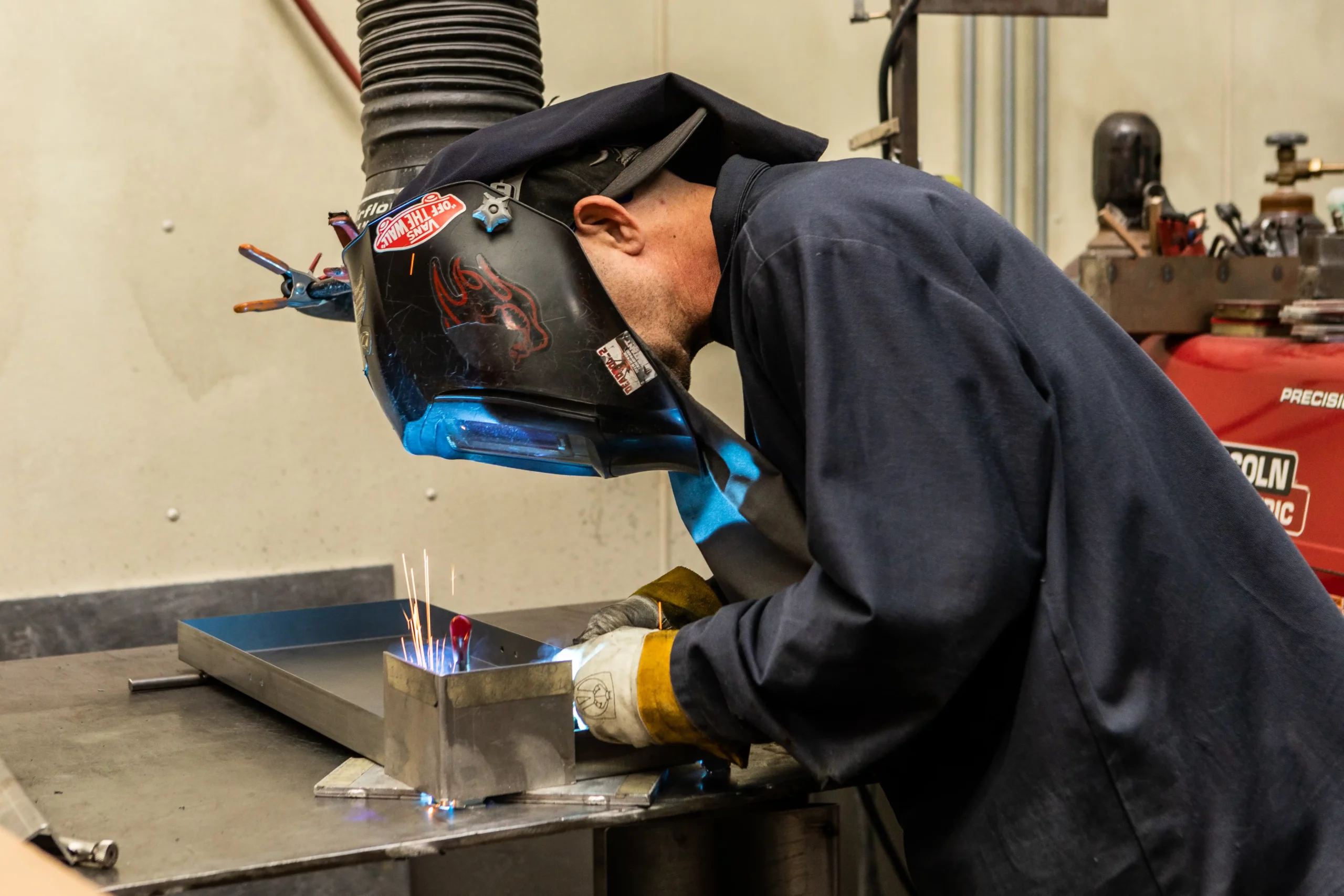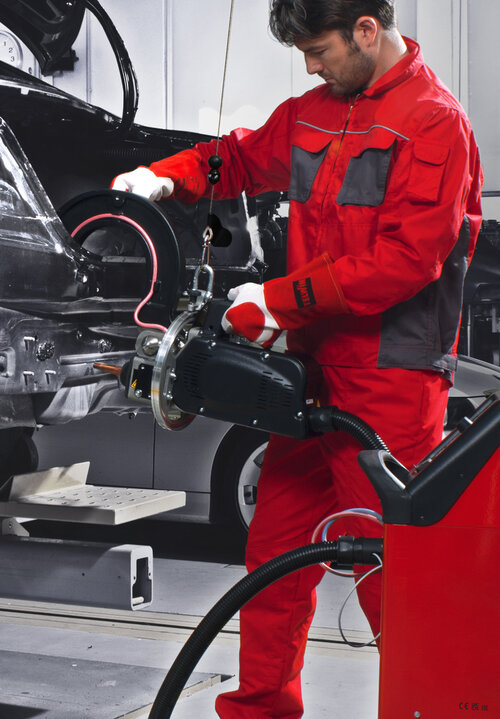Common Welding Repair Service Issues and How to Address Them Effectively
Welding fixings typically encounter an array of issues that can endanger the honesty of the end product. Common issues include inadequate infiltration, porosity, and misalignment, to name a few. Each problem provides unique challenges that need particular methods for resolution. Understanding these concerns is vital for welders aiming to enhance their outcomes and abilities. This conversation will discover these typical welding fixing concerns and efficient techniques to resolve them.
Inadequate Penetration
Inadequate penetration takes place when the weld steel falls short to totally fuse with the base material, leading to weak joints and possible architectural failures. This problem commonly originates from inadequate heat input, wrong electrode angle, or improper welding rate. Welders might experience insufficient penetration as a result of a miscalculation of the necessary parameters for a certain material density or type. Additionally, contamination on the base product's surface area can hinder efficient bonding, aggravating the issue. To resolve poor penetration, welders should ensure ideal setups on their devices and preserve a tidy job surface area. Normal examination of welds is advised to recognize any type of deficiencies early, enabling timely modifications and the avoidance of compromised architectural integrity in bonded settings up.
Porosity
Porosity is a common problem in bonded joints that materializes as tiny gas bubbles caught within the weld metal. This issue can jeopardize the honesty of the weld, causing reduced stamina and potential failure under stress and anxiety. Montana Mobile Welding and Repair Belgrade Fabrication. Porosity commonly develops from contamination, dampness, or incorrect welding strategies, which allow gases to run away right into the molten weld pool. To resolve porosity, welders must guarantee proper surface prep work, maintain a tidy workplace, and make use of ideal welding specifications. Additionally, choosing the appropriate filler product and protecting gas can alleviate gas entrapment. Routine examination and testing of welds can aid identify porosity early, assuring prompt rehabilitative activities are taken, thus maintaining the top quality and reliability of the bonded structure
Imbalance
Misalignment in welding can arise from various factors, including inappropriate setup and thermal expansion. Comprehending the origin is essential for effective resolution. Numerous modification methods are offered to realign parts and assure structural integrity.
Root causes of Misalignment
Welding misalignment typically originates from a variety of underlying problems that can endanger structural honesty. One main cause is incorrect fit-up of parts before welding, which can bring about gaps and uneven surfaces. Variants in thermal growth during the welding process can also lead to distortion, specifically if the products being signed up with have different coefficients of development. In addition, inadequate fixturing and clamping might fall short to hold parts safely in place, causing motion during welding. Inadequately maintained tools, including welding machines and tools, may present incongruities in the weld bead, more contributing to imbalance. Lastly, operator mistake, originating from inadequate training or experience, can also play a considerable role in developing misaligned welds.
Adjustment Strategies Available
Dealing with imbalance successfully needs a mix of corrective strategies tailored to the specific issues at hand. One common method is making use of jigs or fixtures to hold elements in the correct position throughout welding, making sure consistent placement. Additionally, pre-heating the materials can help in reducing distortion and improve fit-up. For significant misalignment, mechanical realignment strategies, such as utilizing hydraulic jacks or clamps, can be used to remedy the placement prior to welding. Post-weld heat treatment might also be needed to alleviate stress and anxieties triggered by imbalance. Finally, mindful inspection and modification during the configuration phase can stop imbalance problems from ending up being significant troubles, promoting a smoother welding process and enhancing overall architectural honesty.
Distortion
Distortion is a common difficulty in welding that can emerge from various elements, including unequal cooling and heating. Comprehending the sources of distortion is essential for carrying out effective avoidance strategies. Addressing this issue not just improves structural integrity but likewise enhances the overall quality of the weld.
Root causes of Distortion
When based on the intense warm of welding, products usually go through modifications that can cause distortion. This phenomenon primarily develops from thermal development and contraction during the welding process. As the weld location warms up, the material increases; upon air conditioning, it gets, which can produce inner stress and anxieties. On top of that, unequal heating throughout a workpiece can intensify these tensions, leading to bending or flexing. The sort of product also plays a considerable function; metals with differing thermal conductivity and coefficients of growth may react differently, leading to uncertain distortions. Furthermore, bad joint style and insufficient fixturing can add to misalignment throughout welding, enhancing the probability of distortion. Comprehending these causes is important for efficient welding repair service and avoidance techniques.
Prevention Techniques
Reliable prevention methods for distortion during welding concentrate on controlling heat input and making sure correct joint design. Keeping a constant warmth input helps to reduce thermal development and contraction, which can result in distortion. Utilizing techniques such as pre-heating the work surface can likewise minimize the temperature slope, advertising consistent website home heating. Furthermore, picking ideal joint designs, such as T-joints or lap joints, can enhance security and reduce stress focus. Implementing appropriate fixturing to safeguard the workpieces in position even more help in maintaining positioning throughout the welding procedure. Staggered welding series can disperse warm more equally, protecting against localized distortion. By applying these methods, welders can considerably decrease the probability of distortion and boost the total quality of their welds.
Splitting
Splitting is an usual concern experienced in welding repair work, often arising from numerous aspects such as improper air conditioning rates, material choice, or insufficient joint preparation. The incident of cracks can considerably compromise the honesty of the weld, causing possible failings during procedure. To address this problem, welders need to initially evaluate the source, making certain that materials are suitable and properly selected for the particular application. Additionally, controlling the cooling price throughout the welding process is important; fast air conditioning can induce anxiety and result in cracking. Proper joint style and preparation additionally add to decreasing the danger. Implementing these techniques can improve weld top quality and sturdiness, ultimately decreasing the probability of fracturing in ended up weldments.

Incomplete Combination
A considerable problem in welding repair services is insufficient blend, which happens when the weld metal does not adequately bond with the base material or previous weld passes - Belgrade. This issue can bring about weaknesses in the joint, possibly jeopardizing the stability of the welded structure. Elements contributing to insufficient blend consist of insufficient warmth input, inappropriate welding method, and contamination of the surfaces being joined. To address this concern effectively, welders must assure correct pre-weld cleansing and surface prep work, along with adjust their welding parameters to attain ample penetration and blend. Normal assessment throughout the welding procedure can likewise help recognize incomplete fusion early, permitting prompt corrective procedures to boost the total high quality of the weld
Overheating
While welding repairs can enhance architectural integrity, overheating offers a significant difficulty that can result in product deterioration. Excessive warm during welding can change the mechanical properties of metals, causing decreased stamina, increased brittleness, and bending. This sensation is particularly crucial in high-stress applications where architectural reliability is extremely important. Determining overheating can include visual inspections for staining or distortion, along with keeping track of temperature during the welding procedure. To reduce the threats associated with getting too hot, welders ought to use ideal methods, such as regulating heat input, changing traveling rate, and utilizing suitable filler materials. In addition, executing pre- and post-weld warmth therapies can aid bring back material residential or commercial properties and boost the total quality of the repair service, ensuring long-term efficiency and safety and security.
Regularly Asked Questions
What Are the Typical Indicators of a Welding Issue?

Just How Can I Check My Welds for Top quality?
To test welds for quality, one can make use of aesthetic assessments, ultrasonic testing, and radiographic techniques. Each technique guarantees architectural stability, recognizes defects, and confirms adherence to defined criteria, eventually boosting the integrity of the welded joints.
What Safety Precautions Should I Take While Welding?
When welding, one should prioritize safety and security by putting on ideal individual safety tools, making certain correct ventilation, protecting combustible products away, keeping a tidy office, and knowing surroundings to avoid crashes and injuries.
Can I Repair a Weld Without Remodeling the Entire Joint?
Fixing a weld without redoing the entire joint is feasible, relying on the damages (Montana Mobile Welding and Repair Fabrication). Methods such as grinding, including filler product, or using a welding process can properly address specific flaws while maintaining the bordering structure
What Tools Are Important for Efficient Welding Services?
Crucial devices for reliable welding repair services include a welding maker, wire brush, grinder, safety equipment, clamps, and filler products. Each device plays an important function in ensuring quality and safety during the repair service process. Porosity generally arises from contamination, moisture, or inappropriate welding techniques, which allow gases to run away right into the molten weld swimming pool. Improperly maintained tools, consisting of welding makers and tools, might present variances in the weld bead, further contributing to misalignment. When subjected to the intense heat of welding, products often undergo adjustments that can lead to distortion. Splitting is a typical concern experienced in welding repair services, typically resulting from various variables such as incorrect air conditioning rates, material option, or poor joint prep work. A considerable issue in welding fixings is insufficient blend, which takes place when the weld steel does not adequately bond with the base product or previous weld passes.
Comments on “The role of heat can do for distortion prevention in Montana Mobile Welding and Repair Fabrication”